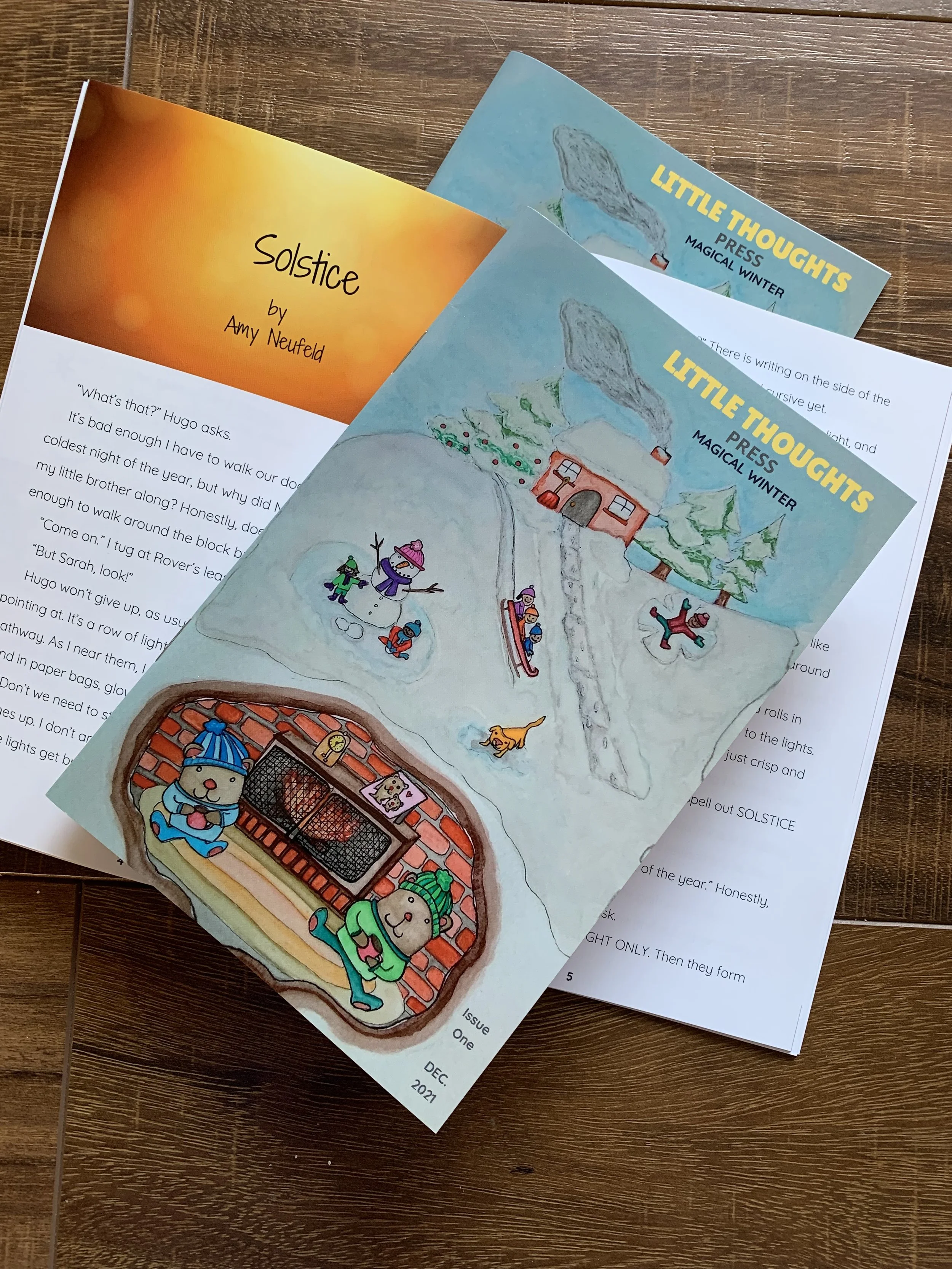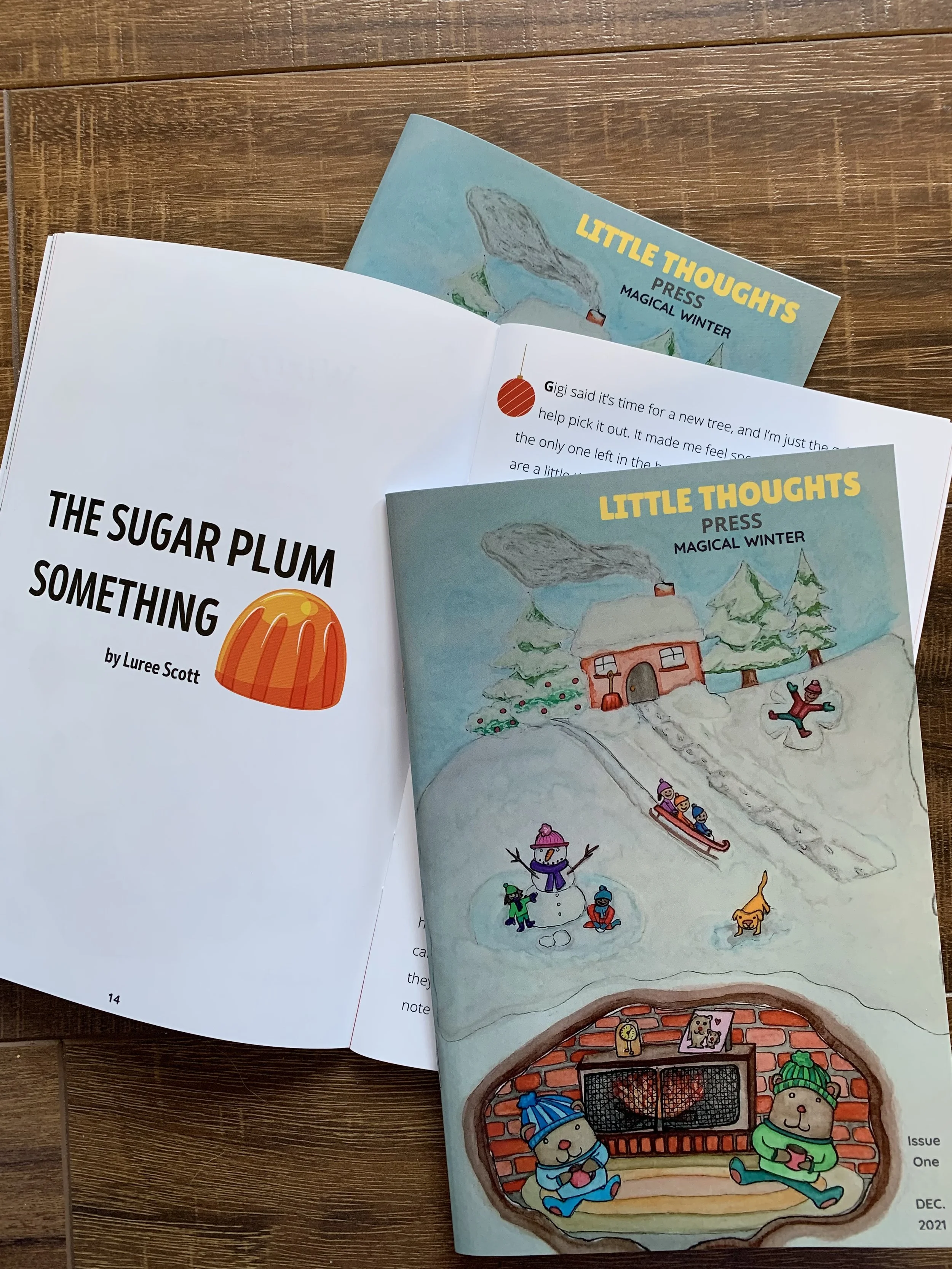Keira Legge is 9 years old and in 5th grade. She loves reading. Her favorite books are the Justin Case Series and Case Closed Series. In school, her favorite subject is Social Studies. When she is not in school, she plays softball and karate. Keira loves to travel with her family. They went to Hawaii. That was amazing! Her goal is to go to Australia someday.
Keira’s story, “Christmas Countdown,” is part of Little Thoughts Press Issue One: Magical Winter.
Little Thoughts Press: “Christmas Countdown" has a unique structure where the story is told in small snippets for each day leading up to Christmas. It kind of reminds me of diary entries. Can you tell me about how you decided on this structure for your story? Was there anything specific that inspired you?
Keira Legge: I read a book series called Justin Case by Rachel Vail and it was written in a diary style and I loved reading it so I thought I would write my story in that same style. When I heard the 12 days of Christmas song, the idea of writing a story about the days leading up to Christmas came to me.
Little Thoughts Press: "Christmas Countdown" features a lot of wonderful holiday traditions—decorating, family photos, notes to Santa. What are some of your favorite Christmas traditions?
Keira Legge: I love putting decorations around the house while listening to Christmas music. I also really enjoy driving around with my family looking at all the lights on houses and seeing different light shows. It makes it feel so magical.
Little Thoughts Press: One thing I love about writing stories is being able to imagine experiences that are different from my own, and one thing I find challenging is writing dialogue that sounds natural and realistic when spoken by kids.
What do you enjoy most about writing, and what do you find the most challenging?
Keira Legge: It is fun to create different stories, I love imagining ideas and then being able to bring them to life. It is the best. The most challenging is coming up with ideas and themes. I liked this because I was given the theme of winter which helped me figure out what to write about.
Little Thoughts Press: What are your favorite books, and/or what is the best book you've read recently?
Keira Legge: My favorite books are the Justin Case series by Rachel Vale and the Case Closed Series by Lauren Magaziner. Lauren Magaziner has inspired me to write. I have signed copies of her books and she even wrote me a letter. It was awesome!
I am currently reading The Hunger Games by Suzanne Collins and am loving it.
Little Thoughts Press: What is your favorite thing about winter?
Keira Legge: Playing in the snow with my friends. We have had some big snow storms lately and it has been so much fun building snowmen and having snowball fights.
Little Thoughts Press: What inspired you to start writing and do you have any advice for other young writers?
Keira Legge: Other than Lauren Magaziner, my mom and my teachers have inspired me to write. My mom and I worked on a picture book called The Comfy Spot together, which was published recently. My advice is that anything can be a story, it can be big or small, it can really be anything you want. You just have to write it down.
Little Thoughts Press: Is there anything else you wish I had asked?
Keira Legge: For those that don’t like to write, I want to say that it doesn’t have to be boring. You can write about anything you want, it can be about your family, your favorite game, it can be magical or completely make-believe. There is no end to the possibilities in writing, so just let your imagination go and write it down.
And thank you for having my story be a part of this. It has been such a cool experience. It was awesome to see my story published and with such amazing illustrations.







